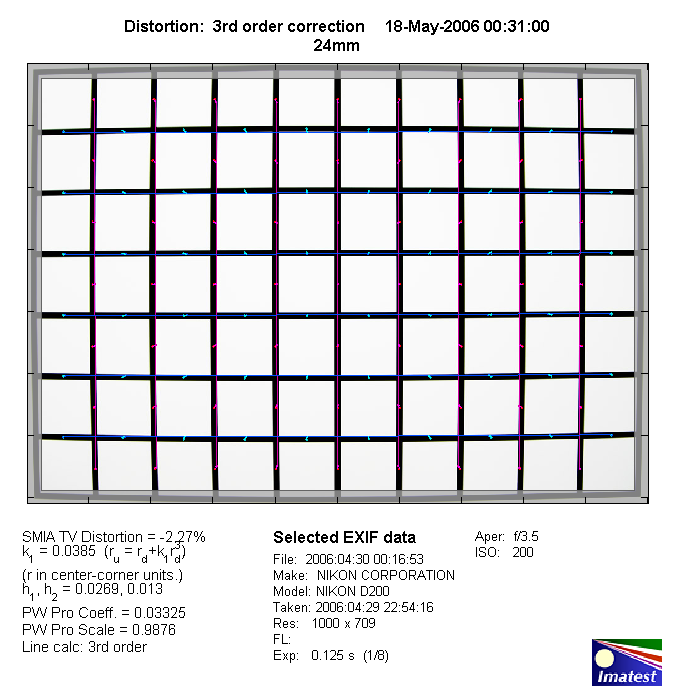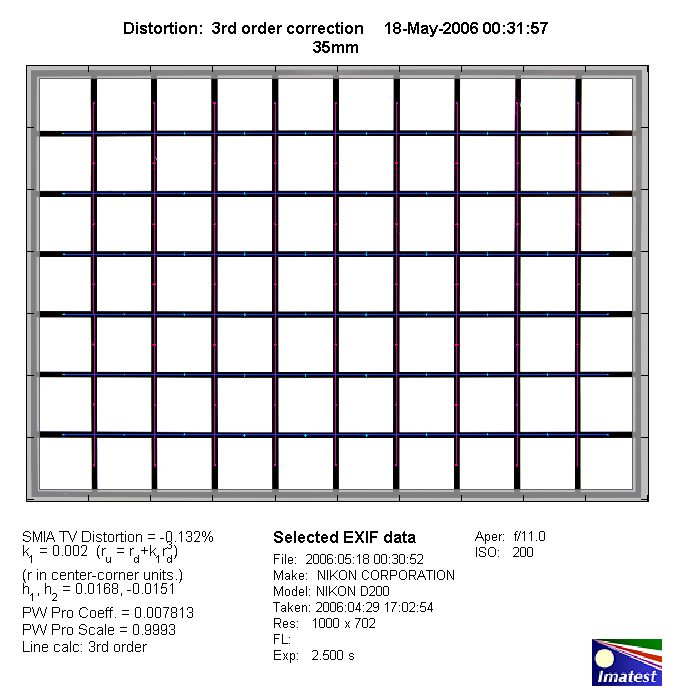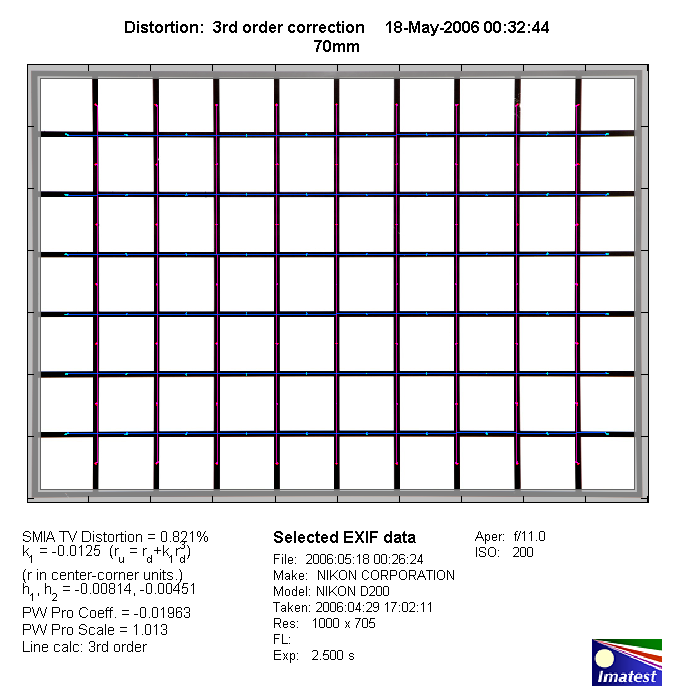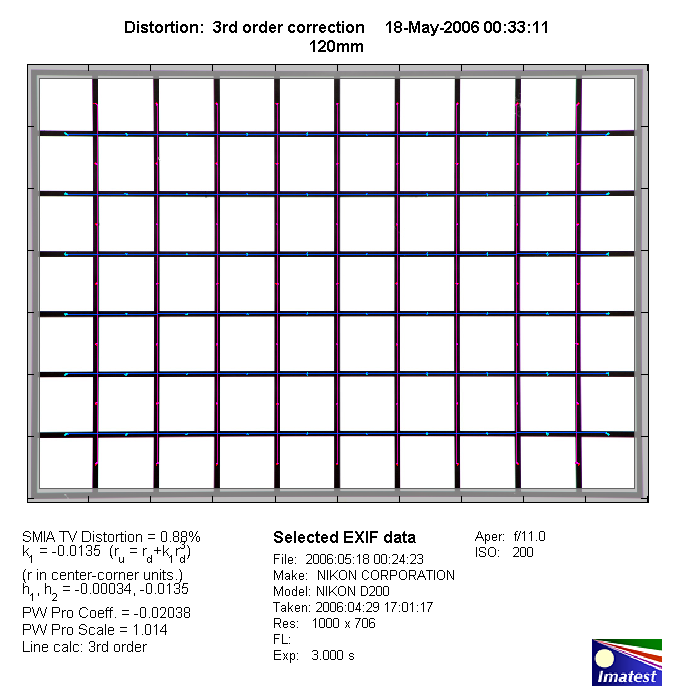|
Nikkor AF-S 24-120mm f/3.5-5.6G IF-ED VR - Review / Lab Test Report - Analysis |
|
Lens Reviews -
Nikon / Nikkor (APS-C)
|
|
Page 2 of 2
Distortion
The AF 24-120mm has a rather aggressive 5x zoom ratio so distortion is a little
higher than average. Typical for such zooms there is some pronounced barrel
distortion at 24mm (2.3%) changing to moderate pincushion distortion (0.9%)
towards the long end of the zoom range. At 35mm the lens is basically free of
distortion.
24mm:

35mm:

70mm:

120mm:

The chart above has a real-world size of about 120x80cm.
Vignetting
The AF 24-120mm VR is a full frame lens so on an APS-C DSLR it can take
advantage of a sweet spot effect and generally the issue is very well
under control. As to be expected the vignetting is most pronounced
at 24mm @ f/3.5. At around 0.7EV vignetting may be visible at times
but the problem doesn't reach extreme degrees and if needed stopping down
helps to reduce the issue significantly.

MTF (resolution)
When following the community discussions around the AF-S 24-120mm f/3.5-5.6G IF-ED VR
it doesn't seem to have the best reputation around so I was quite curious whether
this would show up in the resolution tests. Mostly it didn't but it's worth to
mention that this lens showed an exceptionally even performance without any significant
manufacturing flaws whatsoever - one of the very rare golden samples that I've seen
so far which is even more surprising regarding its rather complex VR design (VR/IS
lenses tend to have more pronounced QC variations).
The center resolution of the lens is excellent throughout the tested
focal length range regardless of the chosen aperture (till f/11).
At 24mm the border performance can't quite follow at wide-open aperture
(quite soft) but from f/5.6 and up the quality level is on a very high level
At 35mm the performance is much more harmonic even at f/4. Interestingly
there's another drop in border quality at 70mm though the quality remains
on a decent level even at f/5.3 (wide-open). At 120mm the resolution
characteristic is quite even again. The lens suffers a little from
RSAs (residual spherical aberrations) at the wide end of the zoom range
whereas field curvature isn't overly pronounced.
All-in-all the results are quite impressive for a 5x zoom here.
Please note that the MTF results are not directly comparable across the different systems!
Below is a simplified summary of the formal findings. The chart shows line widths per picture height (LW/PH) which can be taken as a measure for sharpness.
If you want to know more about the MTF50 figures you may check out the corresponding Imatest Explanations
Chromatic Aberrations (CAs)
Chromatic aberrations (color shadows at harsh contrast transitions) are
relatively pronounced at most settings with an average CA pixel width
beyond 1px at the image borders. The issue is most
pronounced at 24mm with a peak of 1.7px whereas the problem is quite
a bit less apparent at 70mm.

Verdict
The Nikkor AF-S 24-120mm f/3.5-5.6G IF-ED VR showed a quite impressive
performance for a zoom lens with a 5x focal length ratio. Apart from
a few weak spots the resolution figures are very high and on an APS-C
DSLR vignetting is not a big issue. The amount of barrel distortions
may be a little objectionable at 24mm (only) and the level of CAs could be a
little better. Mechanically the lens is roughly in line with other
consumer grade lenses made by Nikon so don't expect a tank-like construction.
The VR (Vibration Reduction) is a welcome addition to the feature
list as is the very fast Silent Wave AF drive. All-in-all it's
a nice package but on APS-C DSLR the focal length range isn't all
that great anymore and most users shopping for a new lens will probably
prefer to have a look at the new AF-S 18-200mm VR II.
|